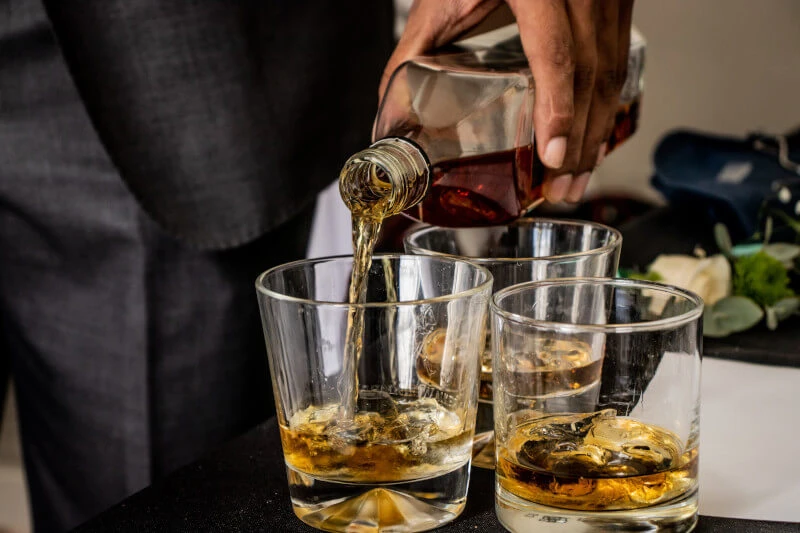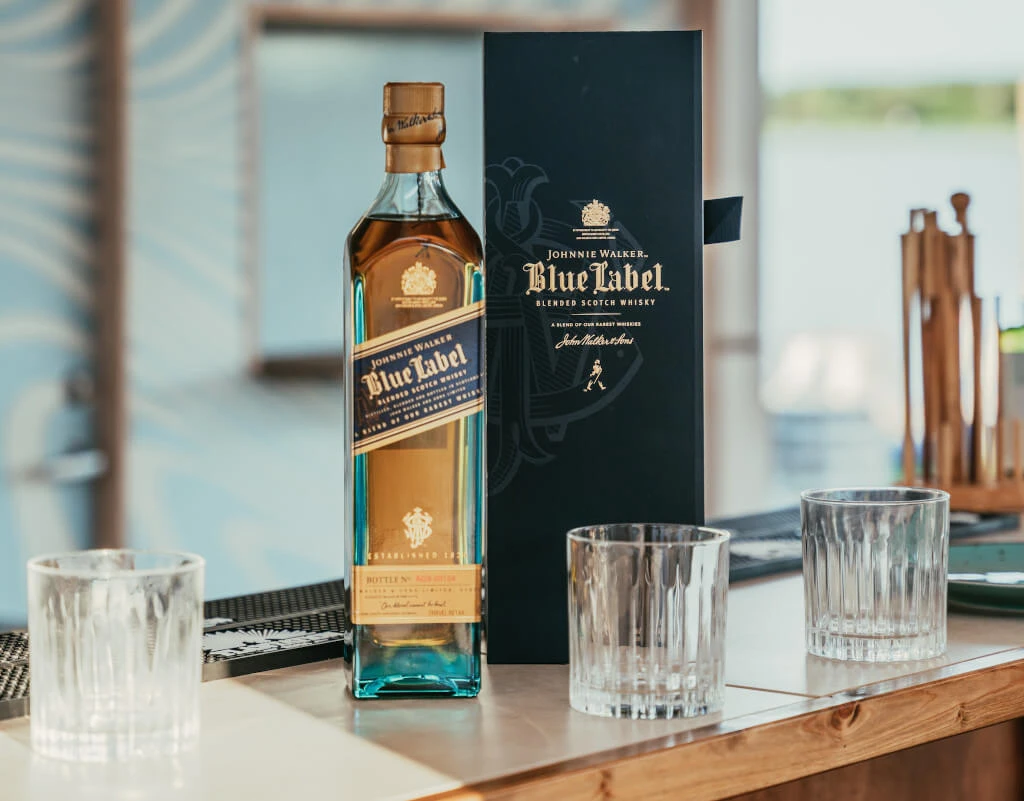When stepping into the exquisite domain of premium whiskies, a revered name that stands tall in this illustrious category is Johnnie Walker Blue Label. With an enigmatic history and a reputation forged through meticulous crafting, this whiskey has become a benchmark in the industry. A pertinent question that arises in the minds of both novice and seasoned whiskey enthusiasts is related to the age of this prestigious blend.
The Birthplace of Blue Label
Johnnie Walker commenced the production of its Blue Label variant in the heart of Scotland in 1992. One out of every 10,000 barrels of whisky doesn’t cut, therefore this launch marked the debut of a premium blend. Because of its limited availability, many are curious about the ages of the spirits used in this premium drink.
The Role Age Has To Play
The age of a whiskey, dictated by the youngest spirit in its blend, often serves as a marker of its quality and depth of flavor. While Scotch whiskey, by law, matures for a minimum of three years, the Blue Label’s aging period remains a subject of speculation, with estimates ranging from 28 to a mesmerizing 60 years.
It is a known convention in the whiskey industry that the age statement refers to the youngest spirit present in the blend, meaning a meticulous amalgamation of various aged spirits could potentially culminate in a blend that exhibits the abundant characteristics of its older constituents while bearing the age statement of its youngest component. Here are a few components you could consider when looking at the age of a Johnnie Walker Blue Label:
- Legal Framework and Industry Norms: In the domain of Scotch whiskey, there exists a statutory minimum maturation period of three years, according to the Scotch law. This rule serves as the foundation, indicating that every spirit in the Blue Label blend adheres to this minimum aging benchmark, providing a starting point in our analysis.
- Speculations and Estimates: The whiskey circles harbor varying speculations regarding the age of the spirits in the Blue Label blend. One prevailing rumor is that the blend houses spirits aged between a remarkable span of 28 to 60 years. While these figures appear in discussions among enthusiasts, it is vital to note that these remain unsubstantiated and are yet to be affirmed by official statements from the House of Johnnie Walker.
- Official Statements: Johnnie Walker maintains a stoic silence on the exact age composition of the Blue Label, embracing a philosophy that urges consumers to focus on the abundant assortment of flavors rather than the numerical age. It is a stance that raises the artistic liberty of the blenders, allowing them to craft a blend that stands tall, not just because of its age but due to its unparalleled quality and flavor profile.
Crafting The Blend
To appreciate the age, one must first understand the meticulous process behind its creation. The synthesis of Blue Label commences with malting, where starches are transformed into liquid sugars, laying the foundation for the flavorful profile that is to come. Following this, the malt undergoes crushing and drying before embracing the transformative power of yeast during fermentation.
The double distillation that ensues heightens the alcohol content while fine-tuning the flavor profile, preparing it for the critical aging process. Here, in seasoned oak barrels, the spirit transforms, aging gracefully while absorbing complex flavors and a rich hue that becomes a hallmark of the Blue Label.
Flavor Profile
With the Blue Label, you find an intricate dance of flavors. The carefully selected single malt scotches introduce notes of vanilla, rose petals, and honey, creating a symphony of lavish undertones that are further enhanced with the incorporation of grain whiskey, introducing a harmonious complexity to the palate.
The Correct Way to Savor Blue Label
In line with the exquisite composition and the intricate crafting process, enjoying a pour of Blue Label is no less an art. It distances itself from the casual enjoyment affiliated with cocktails like the Whisky Sour or the Rusty Nail. The Blue Label demands reverence, urging enthusiasts to abstain from diluting its profile with juices, sugar water, or even ice.
Endowed with a complex flavor profile, it is best savored neat, allowing the intricate flavors to unfold gracefully on one’s palate. Pairing it with a separate glass of ice water serves a dual purpose, offering a refreshing palate cleanser while amplifying the aroma when sipped neat.
The Ideal Glassware

While it might be tempting to reach out for any whiskey glass, the choice of glassware can significantly boost the experience of enjoying a Blue Label. Whiskey snifters, designed to enhance the aroma, prove to be the ideal companion, promising a sensory indulgence that brings out the layered notes to the fore, offering a tantalizing glimpse into the potential age of the spirits used in the blend.
A Price Tag Worthy of Its Legacy
An embodiment of premium crafting, the Blue Label commands a price that mirrors its luxurious persona. As of now, a standard 750 ml bottle holds a price tag of $279.99, a value proposition that stands justified given its perceived age and the intricate crafting process.
The Global Recognition
With a heritage interwoven with mastery and age-old secrets, Blue Label enjoys a reputation as one of the finest Scotch whiskies globally, frequently occupying top positions in global rankings. This widespread acclaim reflects not just its exquisite taste but possibly the decades of aging that impart a timeless appeal to this luxurious blend.
The Inception of Blue Label
Despite its relatively recent official launch in 1992, the Blue Label carries the weight of great history, boasting a blend of the finest malts and grain whiskey sourced from the very best in Scotland. The passage of time, combined with its extensive past, demonstrates that it is indeed an enduring masterpiece. It is a reflection of the long tradition and skill of its makers that could last for decades.
While the age of the individual spirits in Johnnie Walker Blue Label might continue to be a topic fostering animated discussions and speculative theories, the exact age remains a closely guarded secret of the blending masters. It is a secret that possibly steers the enthusiasts to focus more on the delightful, complex play of flavors than the numbers representing age, encouraging them to appreciate the craftsmanship and the mastery behind this renowned blend. Thus, the age of Blue Label transforms into a sensory experience rather than a numerical fact, inviting whiskey lovers to create their narratives with each tasting session, building a personal connection with the blend that is influenced not by its age but by its superior quality and the unparalleled sensory experience it promises.

